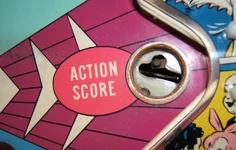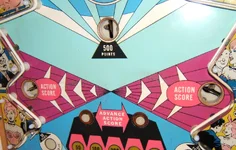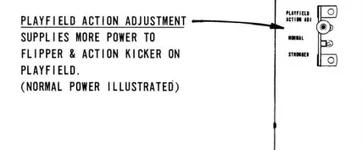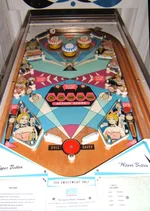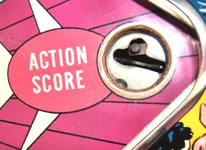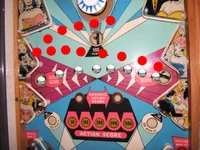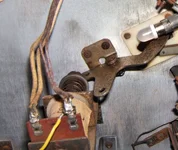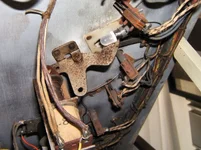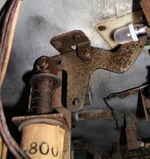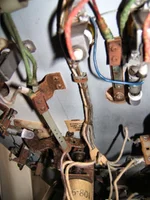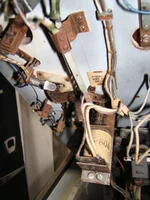Dinkysaurs
Site Supporter
I don’t suppose for one minute anyone on here has a Chicago Coin Playtime machine, but maybe they have worked on one at sometime
So, the problem…………
I had one of these in the 70s and when the ball went into one of the two “Action Score” cups (saucers) on either side of the playfield, it would kick it out, and if you were lucky it would do this back and forth between the two cups for maybe up to half a dozen times
BUT, with this “new” one of mine, it either kicks the ball out too hard OR at the wrong angle, so the ball hits the rubber bumper above the cup – see my arrowed photo.
Now, going into the “works” there is a plug you can put into either a ‘Normal’ or ‘Stronger’ socket, and I thought Bingo! There is the answer – the plug is in the ‘Stronger’ socket, but no, it made no difference at all putting it into the Normal!
So, I thought well next, there has to be some sort of adjustment, but looking under the playfield at the underside of the cups/saucers they are rivetted to the underside of the playfield, and the cross-head screw inside the cups (see photos) seem to serve no purpose at all, as you can see quite clearly, they are screwed into the playfield board, not that you could get a screwdriver in there anyway!!!!
In conclusion, those two screws seem to serve no purpose whatsoever……………….
The only thing I can think of doing now, is to grab the actual kicker bar with two pairs of pliers and bend them to point in a slightly different direction, thus making the ball head more or less for the opposite cup and not the bumper.
Any help or ideas, would be most welcome, thank you
So, the problem…………
I had one of these in the 70s and when the ball went into one of the two “Action Score” cups (saucers) on either side of the playfield, it would kick it out, and if you were lucky it would do this back and forth between the two cups for maybe up to half a dozen times
BUT, with this “new” one of mine, it either kicks the ball out too hard OR at the wrong angle, so the ball hits the rubber bumper above the cup – see my arrowed photo.
Now, going into the “works” there is a plug you can put into either a ‘Normal’ or ‘Stronger’ socket, and I thought Bingo! There is the answer – the plug is in the ‘Stronger’ socket, but no, it made no difference at all putting it into the Normal!
So, I thought well next, there has to be some sort of adjustment, but looking under the playfield at the underside of the cups/saucers they are rivetted to the underside of the playfield, and the cross-head screw inside the cups (see photos) seem to serve no purpose at all, as you can see quite clearly, they are screwed into the playfield board, not that you could get a screwdriver in there anyway!!!!
In conclusion, those two screws seem to serve no purpose whatsoever……………….
The only thing I can think of doing now, is to grab the actual kicker bar with two pairs of pliers and bend them to point in a slightly different direction, thus making the ball head more or less for the opposite cup and not the bumper.
Any help or ideas, would be most welcome, thank you

